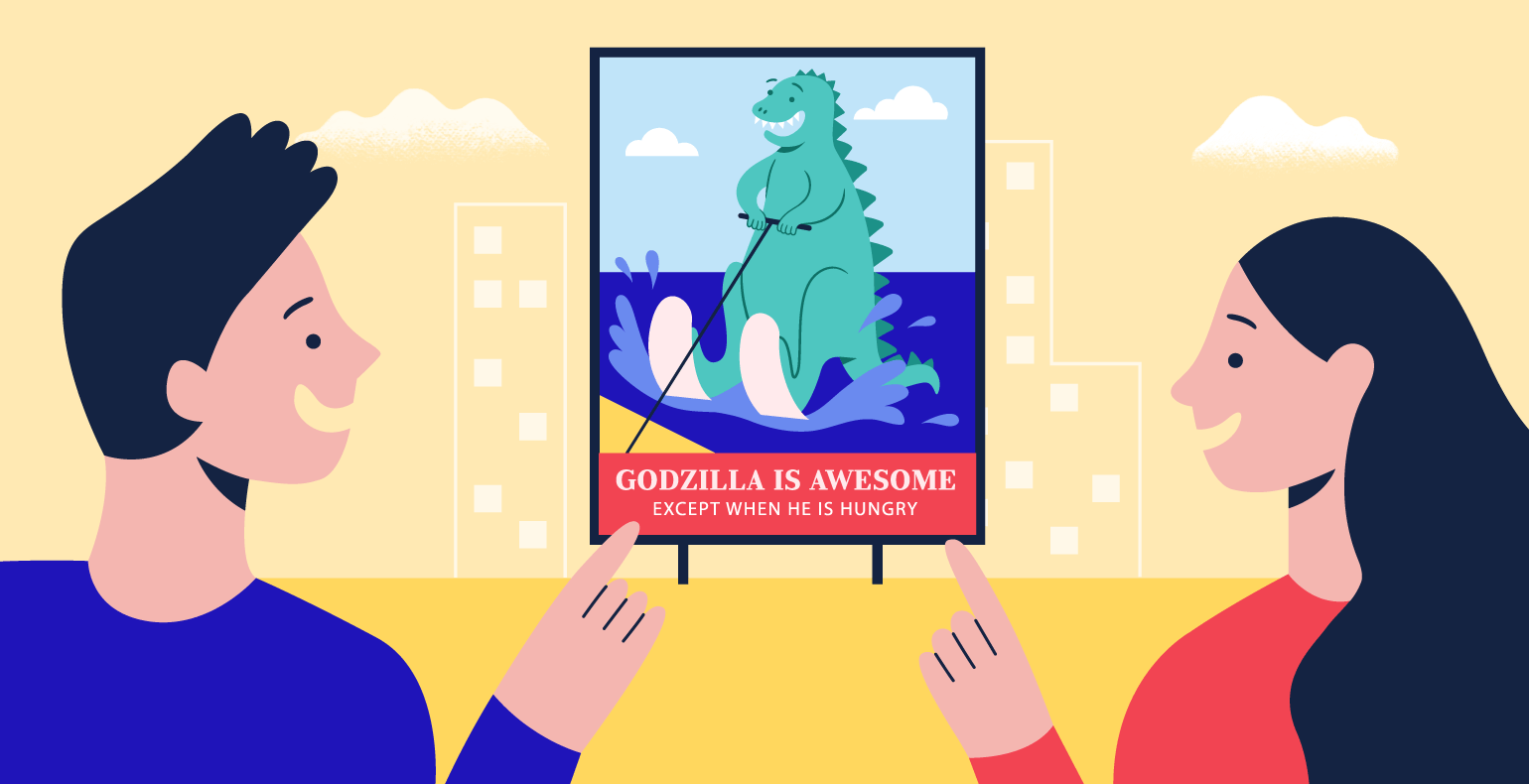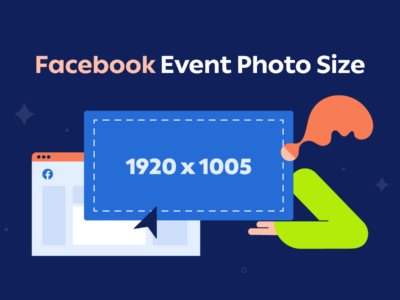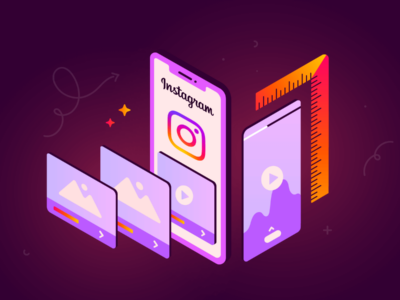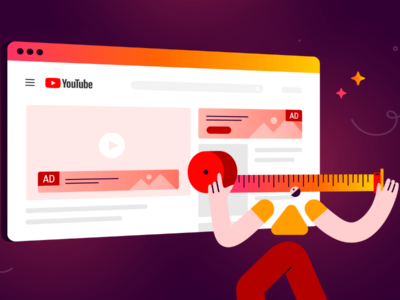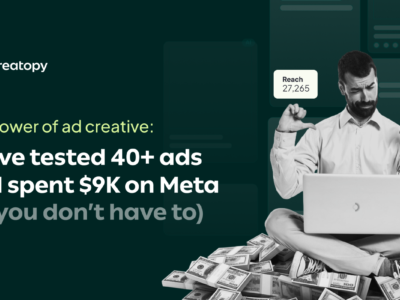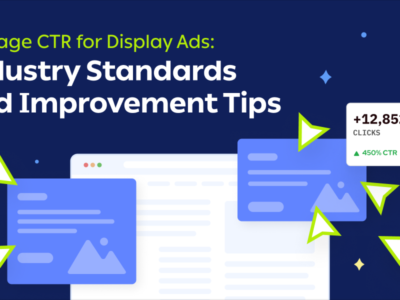How can you grab the attention of your audience by making banner ads that stand out from thousands of others?
By using the right advertising appeals.
There are two main categories of advertising appeals you should consider: emotional appeals and rational appeals.
What are advertising appeals?
Advertising appeals are persuasive techniques used by advertisers to capture consumers’ attention and interest and influence their purchasing decisions. These appeals tap into the target audience’s various emotions, desires, and motivations.
The emotional appeal advertising focuses on using messages, imagery, or music to appeal to people’s emotions.
As Jonah Berger says in his book Contagious: Why Things Catch On, it can lend itself to any product, even those that don’t have an obvious emotional hook.
Rational appeal advertising, on the other hand, uses facts, logic, or reasoning to determine people to take action.

To understand how specific types of appeals from both of these categories work, have a look at the following examples.
Table of contents:
- The Humor Appeal
- The Fear Appeal
- The Sexual Appeal
- The Music Appeal
- The Personal Appeal
- The Romance Appeal
- The Adventure Appeal
- The Youth Appeal
- The Social Appeal
- The Popularity Appeal
- The Endorsement Appeal
- The Brand Appeal
- The Status Appeal
- The Potential Appeal
- The Problem-Solution Appeal
- The Statistics Appeal
- The Testimonial Appeal
- The Scarcity Appeal
- The Durability Appeal
- The Natural Appeal
1. The Humor Appeal
People love a good joke, and they usually can’t resist sharing it with their friends and family.
By incorporating humor in your ads, you can create memorable, positive experiences for your audience, while also increasing the chance that your message will spread organically.
However, humor is risky.
For this type of ads to have the desired effect, you must make sure that the joke doesn’t come across as offensive and that the audience connects it to what you’re trying to promote.
A company that integrates humor successfully in their marketing strategy is Snickers, with its famous You’re not you when you’re hungry tagline.

2. The Fear Appeal
Fear is a powerful type of emotional appeal. It can get people to take action because they want to avoid certain consequences.
Therefore, fear is often used in corporate social responsibility campaigns, like those against driving under the influence, domestic violence, or air pollution.
Shocking negative images usually accompany the message in these ads.
But if your target audience finds them too disturbing, they might try to block them out by looking away or changing the channel.
This simple, yet powerful ad from Volkswagen makes use of the fear appeal without being overwhelming.
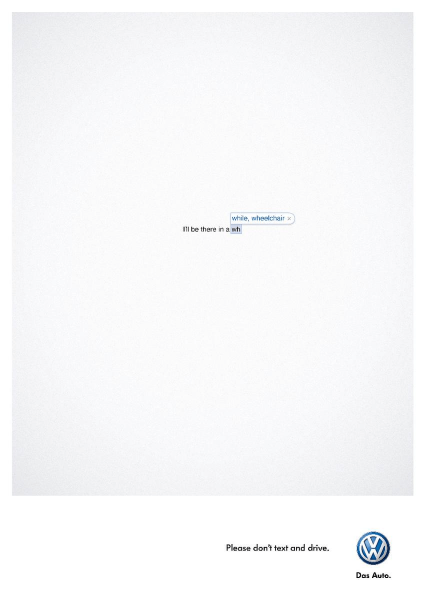
3. The Sexual Appeal
You’ve probably heard the phrase “sex sells” before.
That’s because sex is one of the most popular appeals in advertising.
For decades, companies from all industries had used this type of appeal to promote their products, even when these were not sexual in nature.
Sex is an effective way to grab attention, but overusing it might turn people away. Moreover, ads explicitly objectifying the female or male body are frowned upon.
The general feeling of sexual appeal advertising should lean towards sensuality rather than vulgarity.
Perfume and lingerie brands use this appeal quite often. Here is an example from one of Calvin Klein’s campaigns.
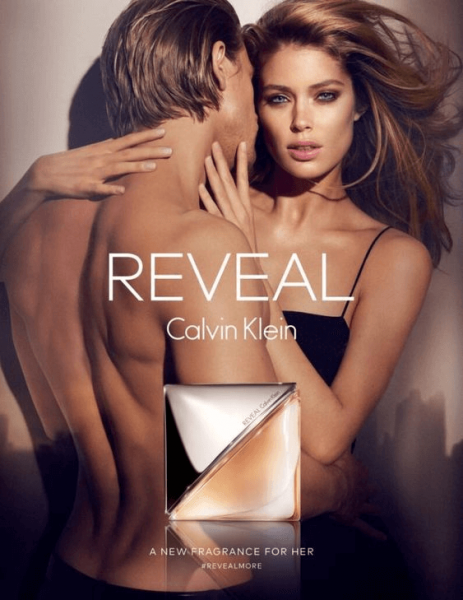
4. The Music Appeal
You can use music to create display ads that amplifythe emotional appeal imagery.
This Super Bowl commercial from Audi is an excellent example of music giving an ad the boost it needs to become truly remarkable.
When David Bowie’s Starman starts playing over the sound of the revving engine, the story gets an instant infusion of excitement, energy, and hope.
Moreover, the way this classic song completes the nostalgic atmosphere of the commercial, as well as its theme, makes it the perfect choice.
5. The Personal Appeal
Personal appeal advertising connects with people on a human level, using a variety of emotions. These ads usually have to do with family or other human-to-human interactions.
The personal appeal is a good choice for humanitarian organizations trying to get people to donate to their cause.
The example below shows a campaign from Feed SA, a non-profit organization that operates food programs in South Africa.
By pasting images of impoverished children on the bottom of shopping carts, they helped raise awareness about world hunger through empathy.
The words on the cart handle read, “See how easy feeding the hungry can be?”
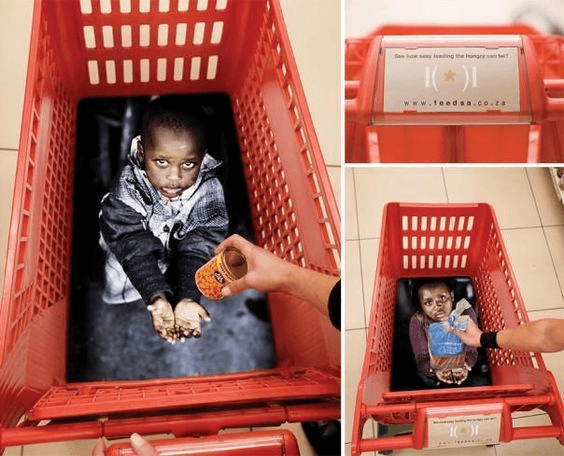
6. The Romance Appeal
Romantic appeal ads are built around warm feelings that are typically associated with being in a relationship, such as joy and belonging.
In this beautiful ad example from Tiffany & Co., the seemingly perfect image of a happy couple laughing together takes center stage.
The story behind the ultimate “Will you?” question is that of two people who genuinely understand each other and don’t need anybody else to be happy.
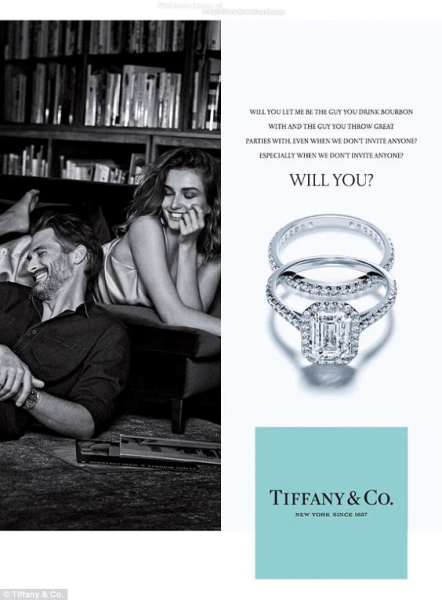
7. The Adventure Appeal
Adventure appeal ads help audiences break away from the mundane and promise them new and exciting experiences.
They are typically used by outdoor clothing, travel, and car companies, and often depict extreme sports, nature landscapes or dangerous territories.
This Mitsubishi ad plays on people’s need to disconnect after a hard day at the office and enjoy some time in the middle of nature.

8. The Youth Appeal
The youth appeal draws on people’s desire to battle the effects of aging and stay young for as long as possible.
Usually, ads employing this appeal are targeted towards an older audience, offering them a way to look or feel younger than they truly are.
You can easily spot this emotional appeal technique in ads promoting anti-aging beauty products, where younger-looking models attribute their good looks to these products.
In this funny ad, Centrum takes a more realistic approach to the youth appeal.
They admit that the effects of aging on our appearance cannot be avoided and suggest consumers invest in products that make them feel young on the inside.
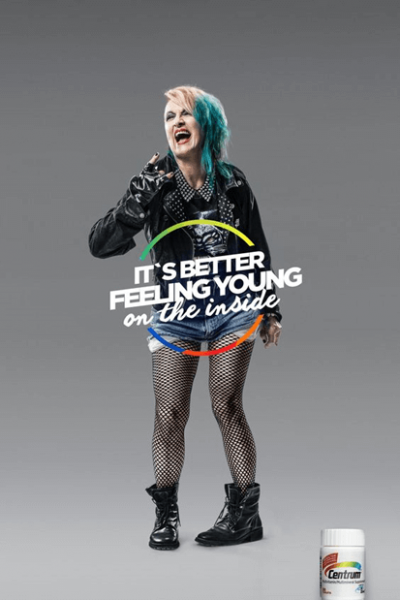
9. The Social Appeal
Most people want to have an active social life—make friends, belong to a group and feel included.
The emotional appeal you can use to speak to this need is the social appeal.
Brands like Budweiser, Heineken, or Coca-Cola are well-known for their commercials showing people coming together for family dinners, major sports events, or celebrations.
These companies connect the beverages they are promoting to these friendly gatherings so the consumer will too.
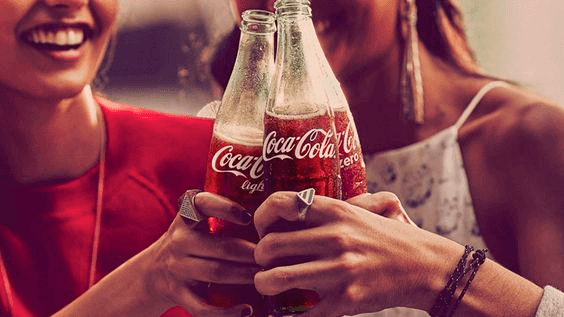
Image Source: puromarketing.com
10. The Popularity Appeal
People are more inclined to buy certain products if they think everyone else is doing it.
They either assume that for a product to earn its popularity, it must be good, or they simply want to be a part of the latest trend.
A significant advantage of using this type of advertising appeal is its snowball effect.

The more people buy your product, the more popular it becomes, which in turn brings you even more customers.
Even campaigns that start off slow can eventually become huge. If you manage to create buzz around what you’re trying to promote, your sales will likely increase.
This is a type of social media banner ad that celebrates the number of followers and uses the popularity appeal.

11. The Endorsement Appeal
Brands often partner up with celebrities to give their products more credibility. But remember, endorsements work only if the celebrity is loved by your target audience.
Big fashion names like Dior, Yves Saint Laurent, Gucci, or Chanel use various celebrities as the face of their clothing, perfumes, and cosmetics lines.
But standard products have also seen their fair share of celebrity endorsements.
For example, here is actress Sofia Vergara promoting diet Pepsi.
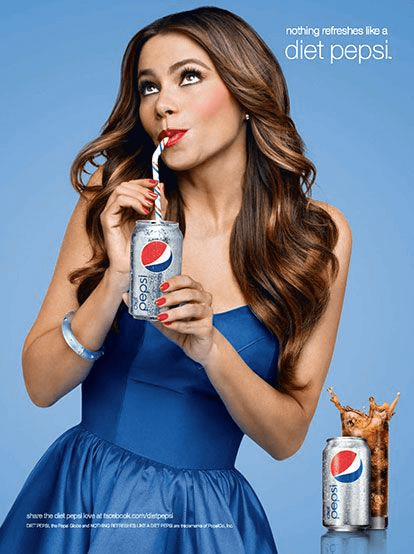
12. The Brand Appeal
If you have a strong brand, you can leverage it to attract customers.
People are often looking to purchase brand-name products, even if these are not necessarily better than their generic alternatives.
But they are willing to pay more for them.
Apple is known to use this type of advertising appeal to promote its iPhone.
This iPhone 4 video commercial from 2021 ended with the line, “If you don’t have an iPhone, well, you don’t have an iPhone.”
And, in 2015, the company created the “Why there’s nothing quite like iPhone” campaign for the iPhone 6.
The iPhone ads are often minimalistic and rely exclusively on the notoriety of the brand.
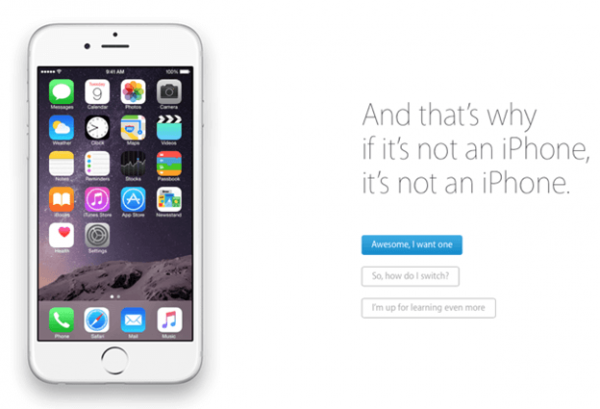
13. The Status Appeal
The status appeal speaks to consumers who want to identify themselves with a higher class, which is why it is also known as the snob appeal.
It is generally used to promote high-end products like handbags, watches, or cars.
Balenciaga employed this appeal in its Spring 2018 campaign.
To evoke status and exclusivity, the company mimicked paparazzi shots.
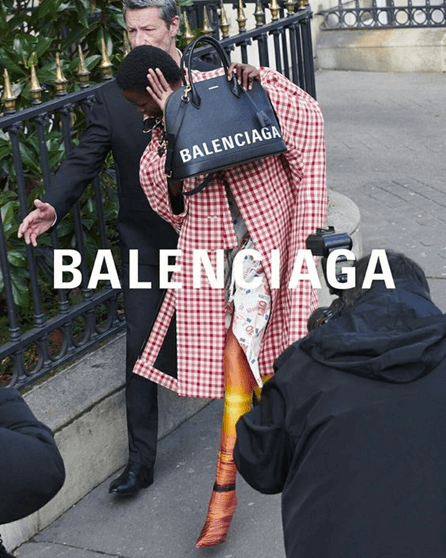
14. The Potential Appeal
Potential appeal ads show people how much better their life can be if they use certain products. They inspire hope and motivate consumers to make changes to their current lifestyle.
Sometimes, the potential appeal is amplified by a less-than-perfect before image. Fitness products use this in their campaigns, but it can be seen as insensitive.
Here is an ad from Adidas, which motivates people to keep running while keeping it positive.
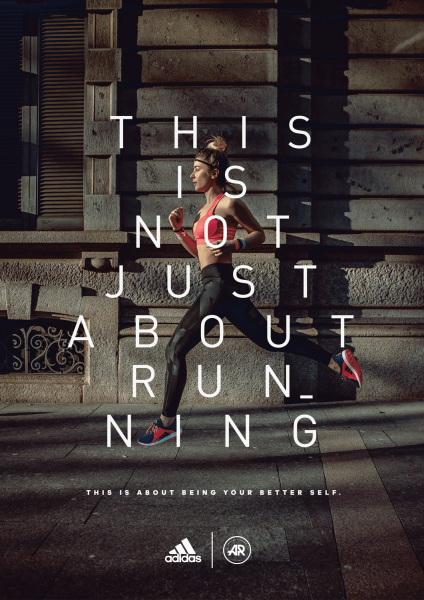
15. The Problem-Solution Appeal
An excellent rational advertising appeal example is the problem-solution appeal. Ads employing this appeal promise to relieve people of the headaches caused by various recurring issues.
This IKEA ad tackles the familiar, yet annoying problem of stacking shoes on top of each other when you don’t have enough space.
It puts the main focus on the issue, using most of the space to bring it to the attention of the audience.
Then, it suggests a simple solution at the bottom—buying a shoe cabinet.
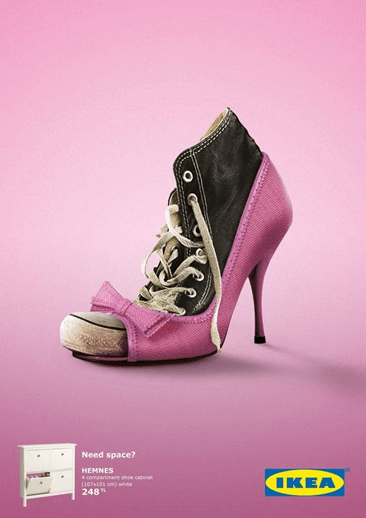
16. The Statistics Appeal
Statistics are another useful form of rational advertising appeals.
Statistic appeal advertising uses numbers and scientific facts to prove to the customer that a product presents certain advantages over other alternatives.
In this ad, Popchips promotes its low-calorie chips by comparing them to two other common types of chips on the market.
It promises consumers they can eat more and stay within the 100-calorie limit, without suffering the unhealthy effects of fried chips or the bland taste of kettle chips.
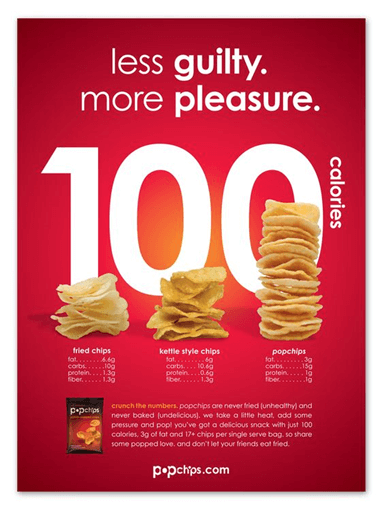
17. The Testimonial Appeal
People trust peer reviews. Some even spend hours reading through them before making a purchase.
Testimonial appeal advertising can help you show potential buyers that others are happy with their purchase. The fact that this message comes from regular people, not from the company itself, makes it more credible.
Here is a testimonial appeal advertising example from Big Train, a B2B company selling drink bases for coffee shops.
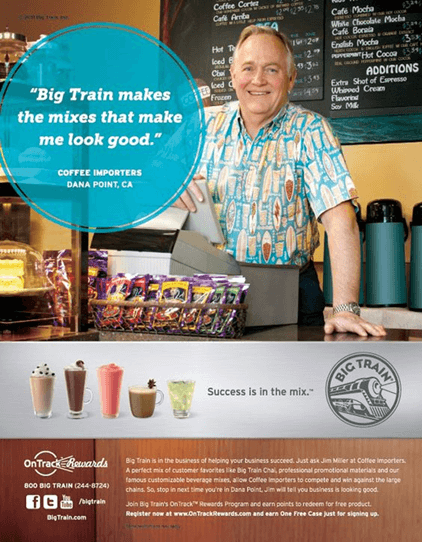
18. The Scarcity Appeal
You can use scarcity appeal advertising to increase the perceived value of a product.
People are willing to spend more on products that are rare because of the feeling of exclusivity associated with owning these products.
Also, limited edition items or offers that will be available for a specific time frame have people rushing to make the purchase out of the fear of missing out.
Starbucks employs the scarcity appeal every year when it releases its limited-edition seasonal drinks.
While some, like the famous Pumpkin Spice Latte, are bound to return on the menu the next year, there’s no guarantee others will come back.
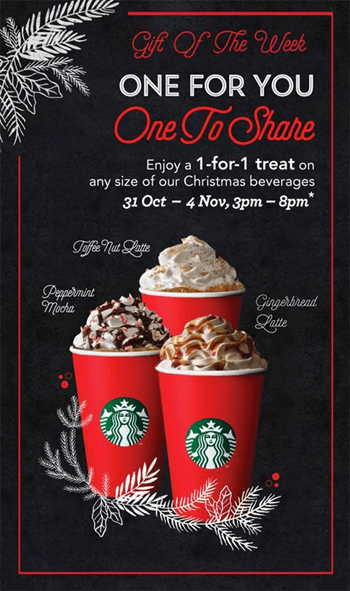
19. The Durability Appeal
When people invest in a product, they expect it to last, especially if it’s on the pricier side.
By using the durability appeal in your ads, you show consumers that your products are worth their money because they can withstand the test of time or tough using conditions.
Ads using this appeal are typically rational in nature.
But Swiss company Patek Philippe gives them a personal, emotional spin by suggesting their watches will be passed on from generation to generation.
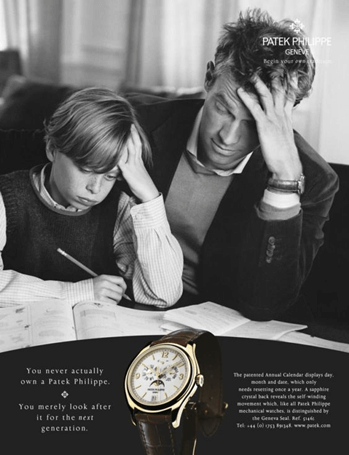
20. The Natural Appeal
Some consumers might be fed up with the flawless ideals advertising media often presents.
Natural appeal advertising offers you the chance to showcase your products in a more relatable way.
People will also appreciate the honesty behind these types of ads.
Dove’s Real Beauty campaign was praised all around the world precisely for these reasons. It brings variety and truth to the otherwise standardized world of self-care and beauty products.
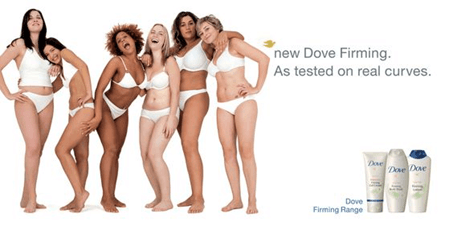
Conclusion
There are many types of advertising appeals out there. Out of those we looked at, the first 14 are emotional appeal advertising examples, while the last six focus on a more rational approach.
Ultimately, the key to using advertising appeals effectively is truly understanding your target audience.
Which ones do you plan to use?

